Caozhou Peony Garden
Caozhou Peony Garden is located in Renmin North Road, Peony District, Heze City, Shandong Province. It is the largest and most diverse peony garden in Heze City. It is a national AAAA-level tourist attraction. The garden consists of five large-field peony scenic areas: theme peony scenic area, Caozhou peony garden ancient spectrum area, mulberry fence garden ancient spectrum flower area, Peony Peony scientific research exhibition area, award-winning peony flower field and lake mountain landscape area, field interesting water scenic area, world national garden scenic area, four seasons peony scenic area, twelve flower god scenic area and so on.
There are many scenic spots in the peony garden, among which the national flower Museum in the south is the only peony theme museum in China. The peony greenhouse in the north is the only greenhouse for peony viewing in all seasons in China. There are also 39 scenic spots such as Guofeng Garden, Guohua Gate, Guohua Soul, Tianxiangge Pavilion, Guiling Stele, Peony Legend and various pavilions and water pavilions.
Caozhou Peony Garden covers an area of 1.06 million square meters, with 1,237 peony varieties, totaling 800,000 plants, more than 600 peony species, and more than 200 other trees, shrubs and ground cover plants. It is the largest plant garden with the largest planting area and the largest variety of peony and peony in the world.
Heze, known as Caozhou in ancient times, is the hometown of Fuxi Sangzi Yao and Shun. Heze peony cultivation has a history of nearly a thousand years. In the history of peony development in China, the Ming and Qing dynasties have been flourishing for more than 500 years.
Tourism Culture
Historical site
Peony Pavilion East, an Eastern ornamental area, is based on the gardens of He Lou and Mao Hutong villages. The eastern part of the Peony Garden is close to the Gushui River of "Liuyin Cage Sandbank" and "Ten Miles of Fugu". It is the site of the battle of Guiling in the ancient battlefield. In 1997, a monument Pavilion of "Guiling Battle Site" was built.
Local specialities
The east side of Peony Garden, centered on Guilingtai, is the centralized producing area of Gengcai in Caozhou. Many persimmon trees in persimmon forest are old persimmon trees for hundreds of years or even hundreds of years. Gengzhuang Geng's fruit growers paid tribute in the Qing Dynasty, and the court named Gengcai. Su Yumei, a poet of the Qing Dynasty, has a poem cloud: "Guiling remains, Qi and Wei are empty. Only Qianlin persimmon, see October red. It seems like a cypress after frost, suspected to be a maple in the late Yangtze River. Branches hang like vermilion, better than peony bushes."
Myths and legends
Caozhou Peony Garden is the flourishing period of Heze peony before and after the annual grain rain. In the peony garden, there are two pavilions of Han Baiyu peony fairies. The two peony fairies are called Gejie and Jade Edition. They married ordinary people and left behind a fairy tale.
According to the records in Strange Tales from Liaozhai, Luoyang people in Henan often hear about this "Caozhou Peony Jiaqilu" and yearn for it. One spring, I came to Caozhou to watch peony. In the apartment, there was a Peony Fairy Gejie who had a private meeting with him in the evening. They became partners and returned to Luoyang together. Later, Gejie's younger sister, Yuban, married Dayong's younger brother. Two couples of men and women worked and weaved, and they lived happily. A year later, each of the sisters gave birth to a boy, and the whole family was happy. But Dayong somehow got suspicious. He visited Caozhou and found that Gejie and Jade Edition were peony fairies. The divulgence of opportunity leads to the breakdown of husband and wife's feelings. Gejie and Yuban left their homes in anger and returned to Caozhou. This is the origin of "Gejie" and "Jade Edition" peony. Later, the people of Peony Township specially built "Gejie" and "Jade Edition" pavilions in the center of Peony Garden.
Honor
Heze Caozhou Peony Garden also has nearly 100 scientific research achievements. It has participated in the International Flower Exposition in Bordeaux, France and the "99 Kunming World Horticulture Exposition" on behalf of the country, and won a great prize. It has been designated as "National Peony, Peony Standardization Demonstration Park" and "Heze Research and Breeding Base of Heze Project". In 2008, Caozhou Peony Garden was rated as AAAA class tourist scenic spot by Shandong Tourism Bureau. In 2013, Caozhou Peony Garden Scenic Spot was approved as the national AAAA-level scenic spot by the National Tourism Administration Quality Grading Committee.
There are more than 40 scenic spots in Caozhou Peony Garden, such as the National Flower Hall, Huahai Qunfang, Heshan Liuxia, which have outstanding characteristics, rich cultural connotations and high ornamental taste. Every time around the valley rains, Huahai crowd becomes magnificent.
Peony in Caozhou Peony Garden belongs to the Central Plains Peony Population, with rich and colorful flowers and varied patterns. Its main colors are pink, red (including purple and red), purple, blue, yellow, white, black, green and polychrome. According to the flower morphology and the degree of male and female evolution, each color system can be divided into nine types: single petal type, lotus type, chrysanthemum type, togui type, rose type, golden ring type, crown type, Hydrangea type and billiard type. Peony is a deciduous shrub of Paeonia lactiflora family, which has a long history of cultivation.
The best time for Heze-Caozhou Peony Garden is from mid-April to early May, during which Heze International Peony Fair will be held annually. Heze International Peony Flower Festival is one of the famous peony tourism festivals in China. It has won the titles of "Top Ten National Flower Festivals" and "China's Most Influential Brand Exhibition". Heze has also been awarded the honorary titles of "China's Excellent Tourism City" and "China's Excellent Festival City". By holding peony flower fairs, not only the popularity of Heze peony has been improved, but also Heze has become a famous "Chinese Peony City" throughout the country.
In 2000, Heze was named "the land of Chinese peony" by China Flower Association. In 2006, Heze was named "Peony City of China". On March 16, 2012, the Chinese Flower Association officially named Heze as the "Peony Capital of China". According to the Regulations on the Naming and Licensing of the Chinese Flower Association and the declaration of the Heze Municipal People's Government, the Chinese Flower Association organized experts to inspect and appraise the city, and decided to name Heze as the "Capital of Peony in China". In the news documentary Taishan North and South, Heze peony is the best in the world, and the peony is the best in the world. Every year in mid-April, when peony flowers are in full bloom, Heze holds the International Peony Tourism Culture Festival.
On December 7, 2018, candidates from CCTV Financial Channel and PCCW Tourism sponsored the charm list of cultural tourism of "Charming China City" in 2018.
Traffic information
Caozhou Peony Garden is located on 220 National Highway to the west, Renmin Road to the East and urban area to the south. It is convenient to take buses and taxis. Out of the railway station, you can take bus No. 3 directly or by taxi.
Heze Railway Station is located at the junction of Beijing-Kowloon Line and Xinju Line. There is a Eurasian Continental Bridge-Longhai Line in the south. It can reach Beijing, Hong Kong, European Continent and Rizhao Port directly from here, and can reach all parts of the country. Peony Garden is located in the south of the city. Accommodation is available in the city.
East Gate of Caozhou Peony Garden:
No. 6 (bus terminus direct)
No. 37 (West Bus Station is direct)
West Gate of Caozhou Peony Garden:
8 roads, 16 roads
No. 3 (West Bus Station is direct)
No. 37 (West Bus Station is direct)
No. 50 (Railway Station Direct)
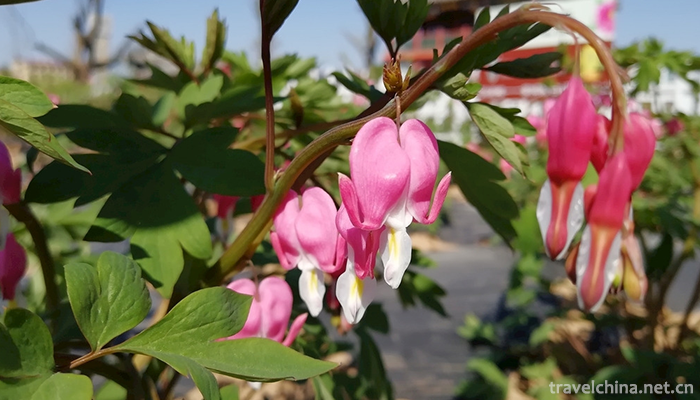
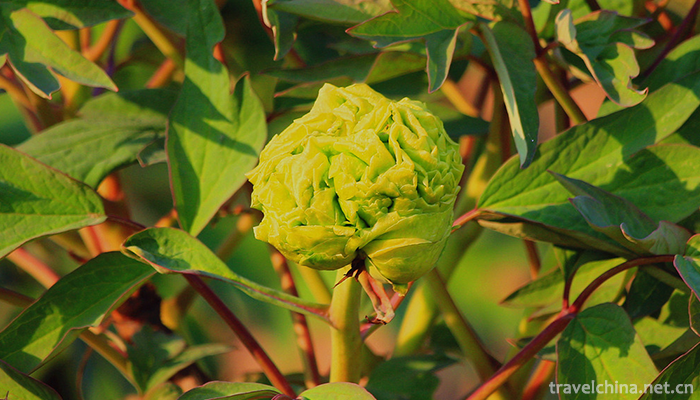
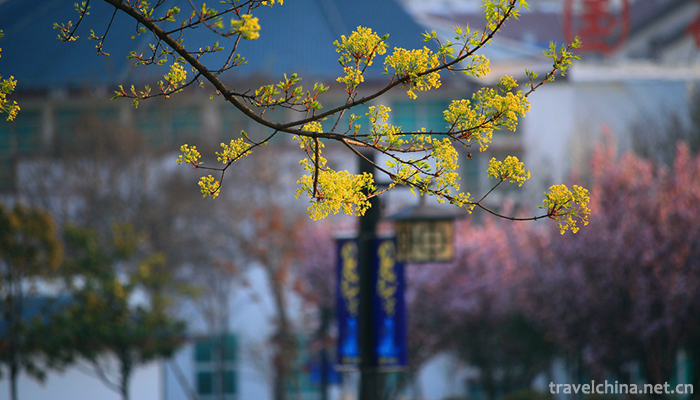
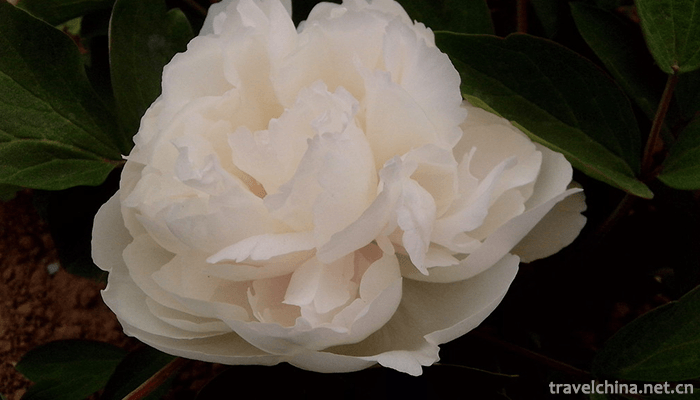
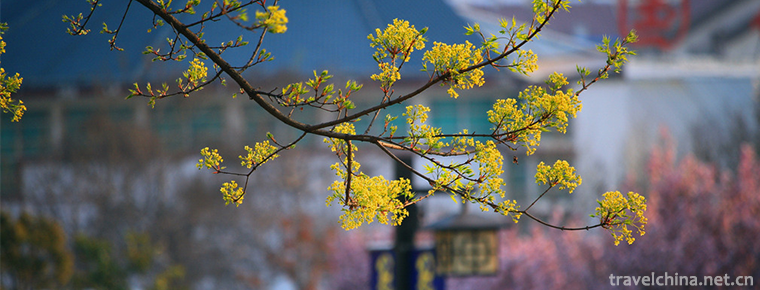
-
1.Donkey HamBurger
Donkey HamBurger is a popular traditional snack in North China. It originated in Baoding. Widely spread in the central Hebei Plain, the brine good donkey meat adds the old soup to join the crispy fire
Time 2018-11-07 -
2.Yuelu Mountain and Orange Prefecture Tourist Area
Orange Island Scenic Area is located in the heart of the Xiangjiang River opposite Changsha City, Hunan Province. It is the largest famous island in the Xiangjiang River with an area of 91.4 hectares
Time 2018-12-12 -
3.Shangrao Lingshan Scenic Area
Shangraolingshan Scenic Area, located in the north of Shangrao County, Shangrao City, Jiangxi Province, is a national scenic spot with an area of 160 square kilometers. Lingshan is listed as the "
Time 2018-12-19 -
4.Side wall ruins
The local people call it "Genghis Khan Wall", also known as "Jinjie Trench". It is the ancient Great Wall ruins spanning the left banner of Sunite, covering 100 square meters.
Time 2019-01-03 -
5.Yangba Subtropical Ecotourism Scenic Area
Yangba subtropical eco-tourism scenic spot is located in Yangba Town, south of Kangxian Town, Longnan City, Gansu Province, 84 kilometers away from the county town
Time 2019-03-02 -
6.Eight claw Fish Powder Pueraria Decoction
500 grams of Pueraria Thunb, 50 grams of octopus, 400 grams of pork legs, four candied dates, and 1/6 peel.
Time 2019-03-27 -
7.Production Techniques of Tibetan Mineral Plant Pigments
Since the emergence of human beings, mineral pigments have been accompanied by human beings. Mineral pigments were first used to draw murals
Time 2019-04-09 -
8.Korean Crane Dance
Crane Dance of the Korean Nationality has a long history and is a unique dance performance form of the Korean Nationality in China. It has the national characteristics and the value of artistic resear
Time 2019-04-16 -
9.Tibetan Engraving and Printing Skills of Dege School of Printing
Tibetan engraving and printing skills of Dege Printing Institute, local traditional handicraft skills of Dege County, Sichuan Province, and one of the national intangible cultural heritages.
Time 2019-04-26 -
10.Fuzhou bodiless lacquerware decoration skills
Fuzhou bodiless lacquerware decoration technology, Fuzhou, Fujian Province, local traditional handicraft, one of the national intangible cultural heritage.
Time 2019-04-30 -
11.Maonan Fat Cover
"Fat set" is the general name of Maonan people's vow-making activities. It prevailed in the Ming and Qing Dynasties. At the beginning, Maonan people used Nuo rituals to sacrifice the heavens
Time 2019-05-27 -
12.Xibo embroidery
Xibo embroidery has a long history and rich connotation. Xibo women are skillful and skillful in capturing the beautiful scenery in life. During more than 200 years of living in the western part of th
Time 2019-07-01